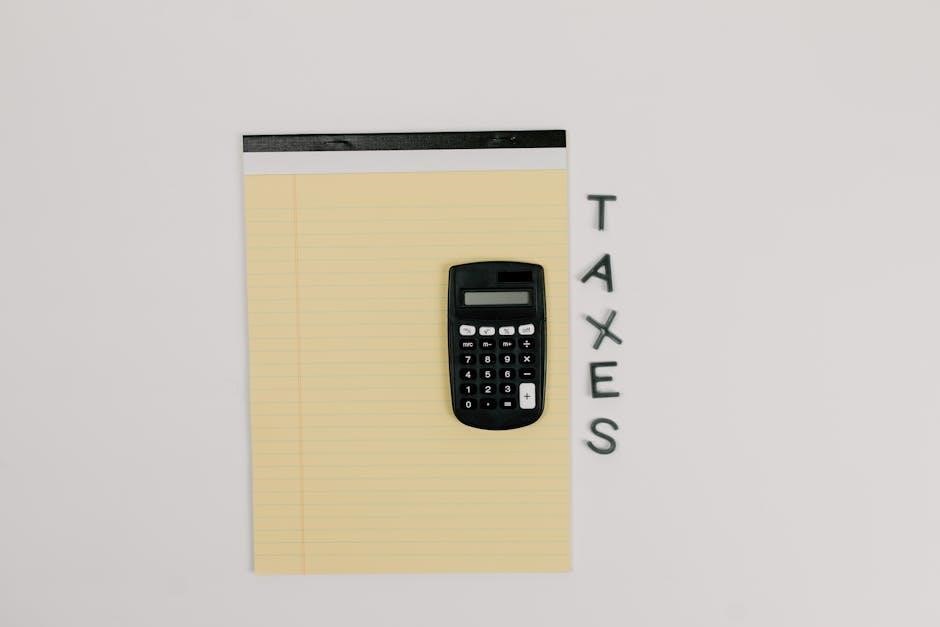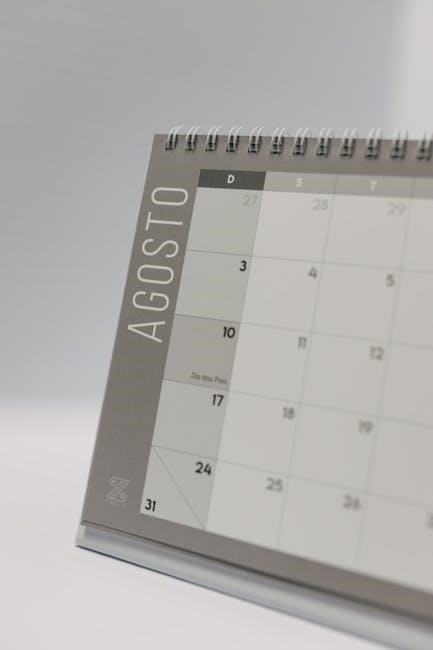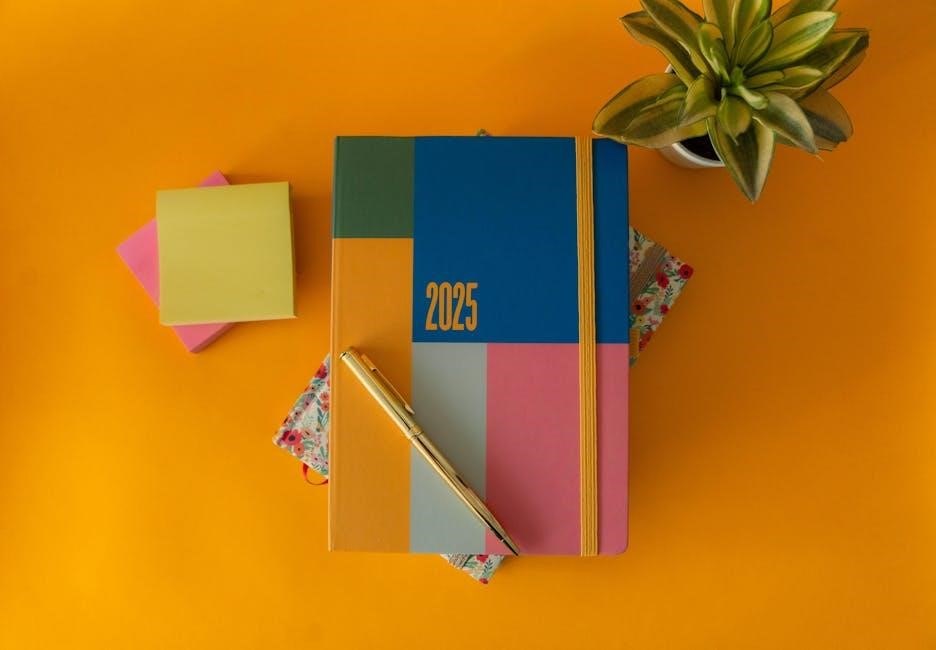year 3 maths worksheets pdf
Welcome to Year 3 Maths Worksheets, designed to support your child’s learning journey. These PDF resources cover essential topics like numbers, fractions, and shapes, providing engaging activities for skill development.
Overview of Year 3 Maths Curriculum

The Year 3 Maths curriculum focuses on building foundational skills in numbers, operations, and problem-solving. Students explore place value, addition, subtraction, multiplication, and division, with an emphasis on mental maths and fluency. Fractions and decimals are introduced to develop an understanding of parts of a whole. Geometry and shapes, including 3D objects, are also covered, encouraging spatial awareness. The curriculum incorporates real-world applications to make learning practical and engaging. Regular practice with worksheets helps reinforce these concepts, ensuring students gain confidence and mastery in maths.
- Numbers and place value
- Four operations (addition, subtraction, multiplication, division)
- Fractions and decimals
- Shapes and geometry
Importance of Worksheets in Learning

Importance of Worksheets in Learning
Worksheets play a crucial role in reinforcing maths skills for Year 3 students. They provide structured practice, helping children understand and retain key concepts. Worksheets cater to different learning styles, offering visual, interactive, and hands-on activities that make learning engaging. Regular use of worksheets improves problem-solving abilities, boosts confidence, and enhances mathematical fluency. They also allow teachers and parents to track progress, identifying areas where additional support may be needed. With topics like multiplication, division, and fractions, worksheets ensure a comprehensive learning experience. Their accessibility in PDF format makes them convenient for both classroom and home use, fostering consistency in maths education.
- Structured practice for concept retention
- Engaging activities for varied learning styles
- Progress tracking and targeted support
- Convenient PDF format for easy access
Benefits of Using PDF Format
Using PDF format for Year 3 maths worksheets offers numerous advantages. PDFs are universally accessible, ensuring compatibility across all devices without requiring specific software. They maintain consistent formatting, guaranteeing that worksheets appear as intended on any screen. PDFs are also easily printable, making them ideal for classroom or home use. Additionally, PDF files are often free to download, providing cost-effective resources for parents and educators. Many worksheets are designed to be interactive, allowing students to complete activities digitally. PDFs are also environmentally friendly, reducing the need for paper waste. Their portability and convenience make them a preferred choice for modern maths education.
- Universal compatibility across devices
- Consistent formatting and readability
- Easy to print and share
- Cost-effective and often free
- Eco-friendly and portable

Key Topics Covered in Year 3 Maths
Year 3 maths covers essential skills like numbers, place value, addition, subtraction, multiplication, division, fractions, decimals, shapes, and geometry. Worksheets include activities on 3D shapes, mass, and unit fractions.
- Numbers and Place Value
- Addition and Subtraction
- Multiplication and Division
- Fractions and Decimals
- Shapes and Geometry
Numbers and Place Value
In Year 3 maths, numbers and place value form a fundamental part of the curriculum. Students learn to understand the value of digits within numbers, focusing on hundreds, tens, and units. Worksheets often include activities that involve reading and writing three-digit numbers, as well as comparing and ordering numbers up to 1,000. Concepts like rounding numbers to the nearest ten or hundred are also introduced. Place value charts and base-ten blocks are frequently used to help students visualize and grasp these ideas. These skills are essential for building a strong foundation in mental maths and problem-solving. Worksheets provide ample practice opportunities to reinforce these concepts in an engaging and structured way.
- Understanding hundreds, tens, and units
- Reading and writing three-digit numbers
- Rounding numbers to the nearest ten or hundred
- Using place value charts and base-ten blocks
- Comparing and ordering numbers up to 1,000

Addition and Subtraction
Addition and subtraction are core skills in Year 3 maths, with worksheets helping students master these operations. Activities focus on mental maths strategies, column addition and subtraction, and solving word problems. Students learn to add and subtract three-digit numbers, including those involving regrouping. Worksheets also introduce concepts like missing number problems and solving simple equations. Real-world scenarios, such as calculating totals or differences in money, are often included to make learning practical. These exercises build fluency and confidence, preparing students for more complex arithmetic in higher grades.
- Column addition and subtraction with regrouping
- Mental maths strategies for quick calculations
- Solving word problems and real-world scenarios
- Missing number problems and simple equations
- Practicing with three-digit numbers
Multiplication and Division
Multiplication and division form a foundational part of Year 3 maths, with worksheets designed to build proficiency in these operations. Students explore multiplication as repeated addition and division as sharing or grouping. Worksheets introduce simple multiplication facts, such as times tables up to 10, and basic division concepts. Activities include solving word problems, creating arrays, and using number lines for visual understanding. These exercises help students develop essential skills for more complex maths in later years; Interactive tasks and real-world scenarios make learning engaging and practical.
- Using arrays and number lines for visual learning
- Solving word problems and real-world scenarios
- Developing fluency in multiplication facts
- Understanding division as sharing or grouping
Fractions and Decimals

Fractions and decimals are introduced in Year 3 maths to help students understand parts of a whole. Worksheets focus on identifying and creating fractions, such as 1/2 or 3/4, and comparing them using visual aids like pie charts or number lines. Basic operations, like adding simple fractions with the same denominator, are also covered. Decimals are explored through money concepts, such as understanding £0.50 as half a pound. These topics build problem-solving skills and prepare students for more advanced maths. Interactive exercises and real-world examples make learning fractions and decimals engaging and relatable.
- Identifying and creating simple fractions
- Comparing fractions using visual aids
- Understanding decimals through money concepts
- Basic fraction addition and subtraction
- Building a foundation for advanced maths
Shapes and Geometry
In Year 3 maths, students explore shapes and geometry to develop spatial awareness and problem-solving skills. Worksheets introduce 2D and 3D shapes, focusing on their properties, such as sides, vertices, and angles. Activities include identifying and naming shapes, like squares, triangles, and cubes, and understanding basic symmetry. Students also learn to create and recognize patterns using shapes, enhancing their creativity. These exercises help build a strong foundation for more complex geometry concepts in later years. Interactive tasks, such as matching games and shape sorting, make learning engaging and fun.
- Identifying and naming 2D and 3D shapes
- Understanding shape properties and symmetry
- Creating patterns and recognizing tessellations
- Developing spatial awareness and visual skills
- Building a foundation for advanced geometry

Worksheet Structure and Design
Year 3 maths worksheets are carefully structured to promote clarity and engagement. Clear layouts, visual aids, and progressive difficulty ensure concepts are presented effectively, catering to diverse learning styles.
Different Levels of Difficulty
Year 3 maths worksheets PDFs are designed with varying difficulty levels to cater to different learning paces and abilities. Beginners can start with simple problems, while advanced learners tackle complex questions. This tiered approach ensures every student feels challenged yet confident. The worksheets gradually introduce harder concepts, such as multi-digit operations or mental maths exercises, to build skills progressively. By offering a range of difficulty levels, these resources support personalized learning and allow teachers to differentiate instruction effectively. This flexibility helps students master foundational maths concepts at their own pace, fostering a love for learning and preparing them for future challenges in maths and beyond.
Interactive and Engaging Activities
Year 3 maths worksheets PDFs often include interactive and engaging activities designed to captivate young learners. These resources feature colourful illustrations, puzzles, and hands-on exercises that make maths fun and relatable. For instance, word problems involving real-life scenarios, such as shopping or measuring ingredients, help students connect maths to their everyday experiences. Some worksheets incorporate matching games, mazes, and “spot the difference” tasks to reinforce concepts like shapes, patterns, and basic operations. These activities not only enhance problem-solving skills but also foster a sense of achievement and enjoyment in learning. By blending maths with creativity, these worksheets keep students motivated and eager to explore more.
Real-World Applications
Year 3 maths worksheets PDFs often highlight real-world applications to help students understand the practical relevance of maths. Exercises may involve calculating the total cost of items in a pretend shop, measuring lengths of everyday objects, or determining the time it takes to complete tasks. These activities make maths relatable and show how it is used in daily life. For example, worksheets might include problems about dividing sweets fairly among friends or calculating the distance for a family trip. By connecting maths to real-life scenarios, students develop problem-solving skills and a deeper appreciation for how maths applies to their world. This approach fosters a meaningful and lasting understanding of mathematical concepts.

Resources for Year 3 Maths Worksheets
Discover a wide range of Year 3 maths worksheets in PDF format from top educational websites, offering curriculum-aligned exercises, interactive activities, and teacher-recommended resources for effective learning.
Popular Websites for Download
Several websites offer high-quality Year 3 maths worksheets in PDF format, designed to support curriculum learning. Teachoo, Math Worksheets 4 Kids, and Khan Academy are popular choices, providing a variety of exercises. Many of these sites cater specifically to Year 3 students, ensuring content aligns with their learning objectives. They often include topics like place value, fractions, and geometry, presented in an engaging manner. These resources are free, easy to download, and printable, making them convenient for both teachers and parents. Additionally, some websites allow customization, enabling users to tailor worksheets to individual needs. These platforms are trusted for their reliability and educational value, helping students practice and master key maths skills effectively.
Teacher-Recommended Worksheets
Teacher-recommended Year 3 maths worksheets are carefully selected to meet educational goals and student needs. These resources are often vetted for quality, relevance, and effectiveness in teaching key concepts. Many educators prefer worksheets that align with curriculum objectives, such as those focusing on place value, addition, and geometry. They appreciate features like clear instructions, visuals, and gradual difficulty levels to support different learners. These worksheets are also designed to make learning engaging and interactive, helping students build confidence and fluency in maths. Teachers often share these resources because they are proven to enhance understanding, reinforce classroom lessons, and provide meaningful practice for students at home.
How to Create Custom Worksheets
Creating custom Year 3 maths worksheets allows educators to tailor learning materials to specific needs. Start by defining clear learning objectives and identifying the maths topics to cover. Use templates or design tools like Microsoft Word or Google Sheets to layout the content; Include a mix of problem types, such as multiple-choice questions, fill-in-the-blanks, and word problems. Add visuals or diagrams to make the worksheets engaging. Ensure the difficulty level aligns with the students’ abilities. Finally, save the document in PDF format to maintain consistency and prevent editing. Custom worksheets can also include interactive elements like puzzles or games to enhance learning experiences. This approach ensures relevance and effectiveness for individual or classroom use.

Effective Use of Worksheets
Worksheets are invaluable for reinforcing maths skills, encouraging independent practice, and monitoring student progress. They provide structured learning experiences that cater to diverse learning styles and pace.
Classroom Integration
Year 3 maths worksheets can seamlessly integrate into classroom routines, serving as a valuable teaching tool. Teachers can incorporate them into structured lessons, group activities, or independent practice sessions. Worksheets align with curriculum goals, ensuring focused learning. They cater to different learning styles, with visual, numerical, and hands-on tasks. Digital versions can be used on tablets or computers, enhancing engagement. Worksheets also encourage peer collaboration, fostering a supportive learning environment. Regular use helps track student progress and identifies areas needing extra attention. By embedding worksheets into daily teaching, educators create a balanced and interactive approach to maths education, promoting both individual and collective growth. This method ensures consistent skill development and prepares students for advanced concepts.
Homework Assignments
Year 3 maths worksheets are an excellent resource for homework assignments, providing students with consistent practice outside the classroom. They reinforce concepts taught in school, helping to solidify understanding and build confidence. Worksheets can be tailored to individual needs, with varying levels of difficulty to suit different learners. Parents and caregivers can easily support their child’s learning by reviewing the tasks together. Regular homework assignments using these worksheets promote routine and discipline, while also allowing teachers to monitor progress. Digital PDF formats make it easy to assign and access homework, ensuring convenience for both educators and students. This approach fosters a strong foundation in maths skills and encourages independent study habits.
Assessment and Progress Tracking
Year 3 maths worksheets are invaluable tools for assessing student progress and tracking development over time. They provide clear insights into a child’s understanding of specific maths concepts, allowing teachers to identify strengths and areas needing improvement. Worksheets can be used to conduct formative assessments, helping to guide instruction and adjust teaching strategies. The structured format of PDF worksheets makes it easy to review completed tasks, offering a reliable way to measure learning outcomes. Teachers can also use these resources to monitor progress longitudinally, identifying patterns in performance and adjusting expectations accordingly. Regular use of these worksheets ensures consistent assessment, enabling educators to provide targeted support and celebrate student achievements effectively.
Final Thoughts

Encouragement for Further Practice
Consistent practice with Year 3 Maths Worksheets in PDF format is key to reinforcing learning and building fluency in maths skills. Encourage students to dedicate a few minutes daily to solving problems, starting with simpler tasks and gradually progressing to more challenging ones. Celebrate small achievements to boost confidence and motivation. Parents and teachers can create a supportive environment by integrating these worksheets into homework routines or fun maths games. Regular practice helps students develop problem-solving strategies and a deeper understanding of concepts. By fostering a love for maths early on, these worksheets lay a strong foundation for future academic success and lifelong learning.
